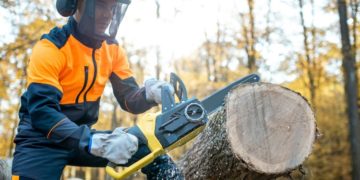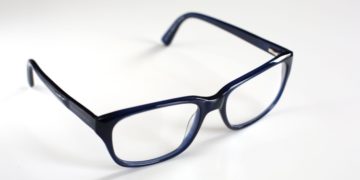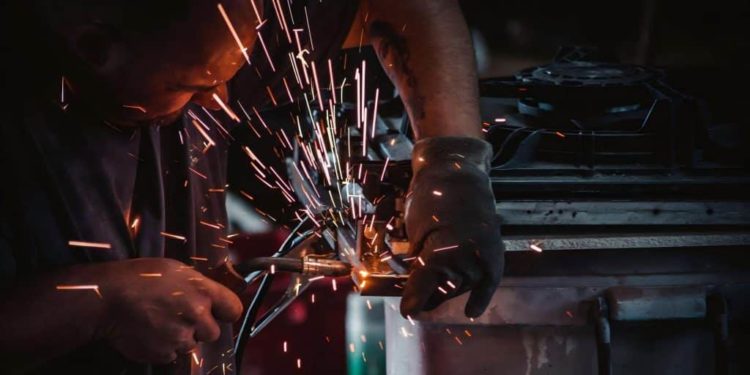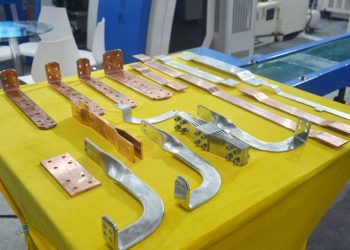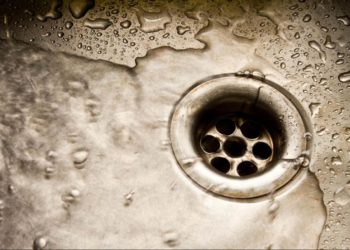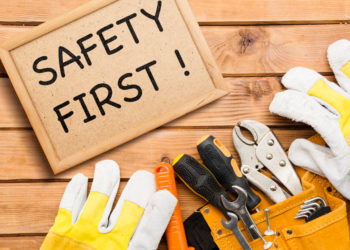In today’s rapidly evolving manufacturing world, American laser welders are continually adapting to meet diverse industry demands. This article uncovers the innovative techniques and technologies welders are adopting to enhance efficiency and precision.
You’ll explore how these professionals are responding to changes in materials, designs, and production processes. By understanding their adaptive strategies, you’ll gain insights into the future of laser welding and its critical role in various sectors. Prepare to discover how adaptability drives success in this dynamic field.
Industry Evolution and Current Challenges
An American made laser welder faces various challenges as industries evolve. They’re adjusting to new materials and techniques, responding somewhat to market demands.
- Material Changes
New metals and composites are being introduced. American-made laser welders must adapt to these materials, necessitating updates to their processes.
- Design Complexity
Designs grow more intricate. This complexity demands advanced laser welding capabilities, pushing equipment and operators to keep pace.
- Production Efficiency
Competition influences demands for higher efficiency. Manufacturers often expect faster turnarounds, which means welders need timely adaptations in workflow.
- Regulatory Standards
Compliance with shifting regulations is necessary. American welders must stay informed about safety and environmental standards to ensure the continued operation of their facilities.
What adaptations help maintain quality while meeting these challenges? Keeping up with technological advancements may offer solutions.
Denaliweld in Context
Denaliweld exemplifies how American-made laser welders adapt to industry needs. The company focuses on precision and efficiency, integrating advanced technologies into its processes.
Key Aspects
- Material Adaptability: The product is compatible with various materials, including aluminum, steel, and composites. This adaptability enables versatility in multiple applications.
- Design Compatibility: Innovative designs cater to the specific requirements of various industries. Customization is based on client demands.
- Production Cycle Improvement: Investments in technologies enhance production cycles. For instance, laser welding systems often significantly reduce cycle times, potentially leading to higher output.
Technical Data of Denaliweld Laser Systems
| Specification | Detail |
|---|---|
| Power Output | Up to 5000 watts |
| Laser Type | Fiber or Nd: YAG |
| Welding Speed | Typical laser welding speeds for thin metal sheets are around 3–4 m/min; even high-power systems rarely exceed 5 m/min for high-quality welds. |
| Materials Supported | Carbon steel, stainless steel, aluminum |
These specifications demonstrate commitment to quality and efficiency. Consider how this level of expertise can positively impact production capabilities.
How does Denaliweld maintain its competitive edge? Through continuous learning and adapting to new regulations, they ensure compliance, which helps avoid potential setbacks.
Technological Advancements
American-made laser welders adapt by incorporating advanced technologies that improve precision and efficiency in response to industry demands. Laser welding techniques continue to evolve, resulting in new solutions that address the challenges welders face today.
Self-Developed Laser Sources and Controls
Welders often develop proprietary laser sources and control systems. These innovations enable better energy management and enhanced focus. For instance, companies might achieve output levels around 5000 watts, which leads to higher productivity.
Pre-Engineered Settings for Process Consistency
Standardizing procedures through pre-engineered settings ensures consistency in weld quality. This approach significantly reduces setup time, enabling quicker transitions between tasks. Adjustments can be made easily based on material composition or thickness, which is crucial for maintaining quality across diverse applications.
| Setting Type | Benefit |
|---|---|
| Laser intensity | Increases penetration depth |
| Speed adjustment | Improves overall cycle time |
| Material-specific | Tailors process to unique properties |
Product Flexibility and Design
Product flexibility in American-made laser welders reflects an adaptation to the diverse needs of various industries. Adaptability in designs allows you to respond effectively to different materials and production challenges.
Cooling Systems
Cooling systems in these welders maintain optimal performance. Effective cooling helps prevent overheating, which can impact weld quality. Systems often include:
- Water-cooled units help maintain a steady temperature.
- Air-cooled systems that provide portability for on-site tasks.
Typical operating temperatures vary, but many systems can withstand up to 600°F, making them suitable for a range of applications.
Portability
Portability is key for many projects. You might find American-made laser welders that include:
- Compact designs for easy transport.
- Built-in wheels to simplify movement.
Some models weigh as little as 100 pounds, making them accessible for multiple job sites.
Modular Integration
Modular integration offers versatility. This feature enables you to adapt the welder to specific tasks easily. Consider factors such as:
- Quick-change systems that will allow faster tool swaps.
- Interchangeable components for specialized applications.
Integrating modules can shorten setup times, enhancing productivity across various projects. Specific configurations can range from 3,000 watts to 5,000 watts, catering to various welding tasks.
Automation and Integration
Automation plays a significant role in how American-made laser welders adapt to industry requirements. Integration of technology enhances versatility and efficiency in operations.
Collaborative Robot (Cobot) Integration
Collaborative robots, also known as cobots, complement the work of human welders. These robots assist with repetitive tasks, reducing physical strain. Integration may lead to more consistent results, especially in high-volume production environments.
Some specifications include:
| Feature | Details |
|---|---|
| Payload Capacity | Up to 20 kg |
| Reach | 850 mm to 1,700 mm |
| Programming Ease | User-friendly interfaces |
| Safety Features | Integrated sensors for safety |
You can expect cobot integration to streamline workflows, eventually supporting more consistent production standards.
Are you considering incorporating collaborative robots, also known as cobots, into your welding operations?
Quality Assurance and Certifications
American-made laser welders place great emphasis on quality assurance to meet industry standards and client expectations. They conduct rigorous testing protocols and implement continuous improvement processes to maintain high production quality.
Rigorous In-House QA
In-house quality assurance, or QA, involves consistent testing and inspections during the manufacturing process.
- Processes include visual inspections and performance testing.
- Advanced technologies are used to track precision and accuracy.
- Equipment is calibrated regularly to ensure that standards are met.
This approach enables manufacturers to quickly identify and address any issues that arise, thereby fostering a reliable production environment.
Industry Certifications
Certifications further demonstrate the commitment of American-made laser welders to superior quality.
- ISO 9001:2015 certification indicates adherence to quality management principles.
- AWS (American Welding Society) certifications validate that welders meet specific industry guidelines.
- CE marking ensures compliance with European safety standards.
Such certifications not only boost confidence among clients but also help companies maintain competitiveness in the global market.
Versatility of Applications
American-made laser welders showcase adaptability across various industries. This versatility drives improvements in precision, productivity, and efficiency, allowing companies to meet specific requirements effectively.
Precision Welding
Precision welding focuses on accurate and consistent welds. American-made laser welders utilize advanced technology to precisely control heat input, thereby preventing warping and compromising material integrity. Specifications often include adjustable power settings ranging from 100 watts to 5,000 watts, catering to different material types, such as aluminum and stainless steel.
Laser Cleaning
Laser cleaning represents an innovative approach to surface preparation. This technique eliminates contaminants such as rust or paint without damaging the underlying material. American-made laser welders can generate high-intensity laser pulses, removing debris quickly and with minimal waste. For example, systems may be equipped with specific wavelengths, such as 1064 nm, ensuring effective cleaning of diverse surfaces.
| Application | Key Feature | Typical Usage |
|---|---|---|
| Precision Welding | Adjustable power settings | Metal fabrication, automotive |
| Laser Cleaning | High-intensity laser pulses | Surface preparation, restoration |
Safety and Compliance
Safety and compliance remain top priorities for American-made laser welders. Firms adapt to maintain these standards while meeting the demands of the industry.
Protective Workstations
Protective workstations play a key role in safeguarding operators. These stations feature shields and barriers to prevent exposure to harmful beams. Some setups even incorporate ventilation systems to mitigate fume hazards.
Personal Protective Equipment
Personal protective equipment (PPE) is crucial for operator safety. Common items include:
- Safety goggles, which protect eyes from laser glare
- Fire-resistant clothing to minimize burn risks
- Hearing protection for noisy environments
Each piece of PPE contributes to a safer working environment, aligning with industry compliance regulations.
Conclusion
American laser welders are redefining industry benchmarks by marrying proprietary laser sources, modular designs, and collaborative robotics with rigorous in‑house QA and global certifications. Whether tackling new alloys, automating workflows with cobots, or ensuring consistent weld quality through pre‑engineered settings, firms like Denaliweld demonstrate how adaptability underpins both precision and productivity. As regulatory demands tighten and production cycles accelerate, this relentless focus on innovation, safety, and efficiency will secure laser welding’s pivotal role in America’s manufacturing future.











